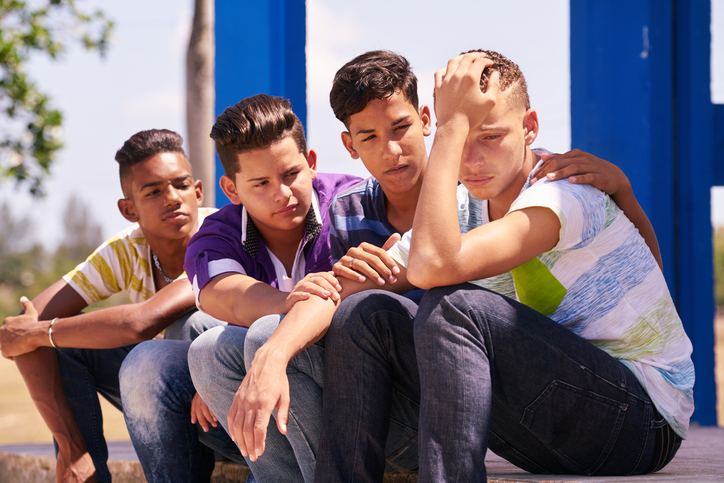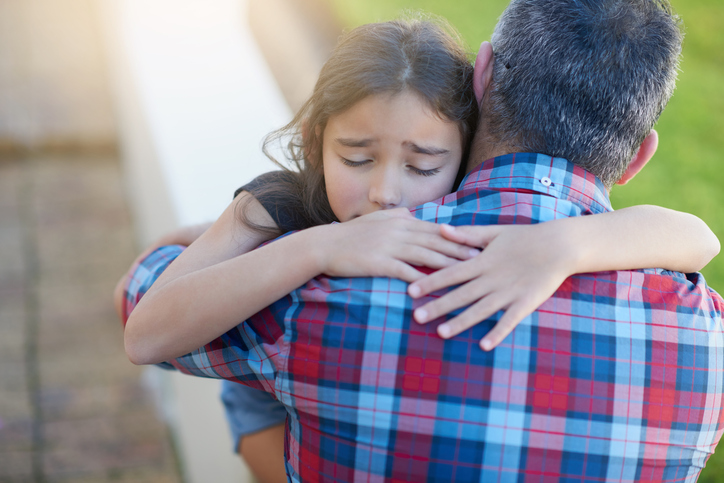 Abuse can be a difficult problem to solve alone. However, support is available. A mental health professional can help people assess and escape abusive situations. Abuse survivors can address their negative emotions and memories of the abuse in therapy.
Abuse can be a difficult problem to solve alone. However, support is available. A mental health professional can help people assess and escape abusive situations. Abuse survivors can address their negative emotions and memories of the abuse in therapy.
Therapy is also available for people who wish to stop abusing others. A therapist may treat underlying mental health concerns and teach someone healthy ways to solve conflicts. Therapy is most effective when a person truly tries to change, as opposed to someone who is only in treatment due to a court order.
Different situations call for different types of therapy. For example, couples counseling may help a survivor of child abuse be intimate with their spouse. Yet few professionals would recommend couples counseling for domestic violence situations. Also, young children require different treatments than adults. Every individual has unique needs.
- Psychotherapy for Abuse Survivors
- Making a Safety Plan
- Therapy for Child Abuse
- Treatment for People Who Abuse
- Legal Help for Abuse
- Case Examples of Therapy for Abuse
- Share Your Story
Psychotherapy for Abuse Survivors
Therapy is a safe place to express and process difficult emotions. A therapist will not judge you for how you respond to abuse. Some people resent their abuser to the point of obsession. Others may still care for the abuser and wish to see them again. You may shift back and forth along this spectrum. Anger, shame, relief, loss…these are all valid reactions.
You may find yourself overwhelmed by emotions. Many types of therapy can help people manage their feelings. Mindfulness techniques aim to make you aware of which situations trigger your emotions. Eye movement desensitization and reprocessing (EMDR) can help you process traumatic memories so they become less disruptive. Equine-assisted activities may teach you how to trust others again.
Rebuilding self-esteem is a common goal in therapy. Most forms of abuse can break one’s confidence. Cognitive behavioral therapy can help you challenge unrealistic expectations of yourself. Narrative therapy can allow you to reframe your identity outside of your victimhood. Experiential techniques such as art therapy can also boost confidence.
Group therapy has demonstrated effectiveness in helping survivors. Social support can help you cope with any stigma you have encountered. Talking with others who have similar experiences can also help you feel less isolated.
Making a Safety Plan
Research shows that a person is at the most risk when they are attempting to leave an abuser. If you are still in an abusive relationship, a therapist may help you develop a safe plan for leaving.
The National Domestic Violence Hotline recommends creating a plan for before, during, and after you leave or take action against an abuser. Some actions that can help as you prepare to seek help for abuse include:
- Gathering evidence of abuse
- Keeping a journal detailing instances of abuse or violence
- Telling at least one trusted individual about your experiences
- Researching local shelters and related organizations
- Having a bag packed with essentials at all times
- Changing routines such as the grocery store you use, the route you take to work, or regular appointments
If you are in immediate danger, please call 911 or your local law enforcement immediately.
Therapy for Child Abuse
There is no one approach to treating children with experiences of abuse or neglect. The child’s age, mental health symptoms, and family dynamics can all affect the type of therapy used. The nature and duration of the abuse can also impact treatment. A child who was sexually abused for one year will likely need different support than a teenager who was physically abused for five years.
Therapy will typically begin with an assessment of the child’s circumstances. Most assessments include behavior, functioning, history or experience of abuse, and treatment needs. A psychotherapist might use clinical tools and behavior checklists to supplement their observations about a child. They may also interview the child’s parents or teachers.
Treatment may involve one or more types of therapy, including:
- Play therapy: Young children may have trouble expressing their feelings in conversation. They may find it easier to act out their emotions through play. Play therapy can help children to process the abuse without feeling threatened.
- Cognitive behavioral therapy: This type of therapy can help children change distorted thinking patterns. For instance, if a child blames themselves for incest, a therapist can help the child understand why the abuse wasn’t their fault.
- Group therapy: In group therapy, a child can meet peers with similar experiences. This environment can help reduce feelings of stigma, shame, and isolation. Group therapy can also be a safe environment to practice new skills and communication tools the child learns in individual therapy.
- Family therapy and parent-child interaction therapy: These modalities are often useful in cases where the offender was a family member. Family therapy can help the non-offending family members repair or strengthen their bonds. Parent-child interaction therapy often focuses on the relationship between parent and abused child specifically.
Ideally, a supportive adult should be involved in the treatment process. If the non-offending parent blames the victim, their attitude may harm the child’s recovery. If the parent is supportive, they may take part in the child’s treatment. In therapy, a guardian can learn how to assist the child’s recovery and reduce symptoms.
 Family members who were not abused may still need treatment. Siblings who witnessed abuse may develop vicarious trauma. Parents can address their own guilt or anxiety about their child’s safety. Treatment may occur in joint therapy or on an individual basis.
Family members who were not abused may still need treatment. Siblings who witnessed abuse may develop vicarious trauma. Parents can address their own guilt or anxiety about their child’s safety. Treatment may occur in joint therapy or on an individual basis.
Research indicates well-rounded treatment plans are often the most successful. A treatment plan could address not only a child’s mental health, but also their medical and legal needs. An educational component is often vital, as it can prevent a child’s academic performance from suffering.
A psychotherapist falls under the “mandated reporter” category. This label means that a psychotherapist has a duty to keep a child safe to the best of their ability. If a therapist has reason to believe a child is being abused, mandated reporting laws override privacy rules. The therapist must notify authorities of the abuse for the child’s protection.
Treatment for People Who Abuse
Treatment programs for people who abuse tend to have mixed results. Some programs are successful, while others seem to have no effect. Experts disagree whether the mixed results are due to differences in treatment methods or the participants’ commitment to change.
Some people in treatment may only be there due to a court order. Research shows people who are court-ordered to receive treatment are as likely to abuse again as people who are arrested and untreated. Some individuals may temporarily show good behavior due to fear of arrest rather than regret for their actions.
People who genuinely want to change are more likely to develop non-abusive patterns. The National Domestic Violence Hotline provides these indicators that a person is headed toward lasting change:
- Admitting to past actions and their consequences
- Accepting responsibility for abusive behavior and recognizing abuse as a choice
- Identifying patterns and attitudes which drive abuse
- Changing one’s response to anger or conflict and the actions one takes in those moments
- Understanding improvement happens over a long time and not abandoning the process of change
Psychotherapy can teach people the skills necessary for the above steps. Therapy may also address co-occurring factors such as sexism, anger, or control issues. Substance abuse is a particularly common concern among people who engage in intimate partner violence.
A person may attend a batterer intervention program in tandem with psychotherapy. Batterer intervention programs are often targeted toward perpetrators of domestic violence. They emphasize accountability for the abuser. The Duluth Model is a common type of batterer intervention program. It coordinates community resources such as law enforcement and victim advocates to sustain positive results after the program is done.
Admitting one has harmed others can be difficult. Yet acknowledging abusive patterns is a necessary first step to changing those behaviors. With treatment and commitment to change, one can learn to stop abusing others.
Legal Help for Abuse
Seeking legal action for the abuse one has experienced can be an immense relief. It can also be a reassurance of safety.
If you are actively experiencing abuse and/or have reason to fear abuse from a person in your life, you may wish to file a protection order. This legal document keeps a dangerous person away from you and your family. It can help guard against harassment by prohibiting all communication. Courthouses, women’s shelters, police stations, and some volunteer organizations can provide protection order forms.
After experiencing abuse, there is a time limit on suing a person or pressing charges. This is called the statute of limitations; it is a determining factor in whether one can seek justice for abuse. Contact a lawyer to be certain you are taking action within this time frame (which can differ by location).
 After contacting a lawyer, you can determine your course of action. You may choose to sue the perpetrator of the abuse and seek damages. Damages are financial reimbursement for costs related to the abuse that occurred. They might be payment for hospital bills, lost wages, or lost career. Damages could also cover psychological and emotional pain.
After contacting a lawyer, you can determine your course of action. You may choose to sue the perpetrator of the abuse and seek damages. Damages are financial reimbursement for costs related to the abuse that occurred. They might be payment for hospital bills, lost wages, or lost career. Damages could also cover psychological and emotional pain.
Being able to provide evidence of abuse will help any case. This could include doctor’s records, threatening texts, and photos of your injuries. If you know a trusted individual who was aware of the abuse as it was occurring, they could offer a testimonial in court.
Laws and consequences related to abuse can differ from state to state or country to country. What qualifies as abuse in one area may not carry the same legal ramifications in another location. The proof needed to charge someone with abuse may also vary by jurisdiction. You can learn more about legal aid for abuse experiences in the U.S. from the National Crime Victim Bar Association.
If you are in the U.S. but are not a U.S. citizen, you may be protected under the Violence Against Women Act, or VAWA. This law addresses immigrant women who are married to U.S. citizens or legal permanent residents. If these women experience domestic violence, they can self-petition for legal status (Green Card). Spanish speakers can find more information from Casa De Esperanza, an organization which provides help and resources for Latinx individuals experiencing abuse.
Don’t let financial issues stop you from being safe and seeking justice. Some lawyers choose to take on abuse and domestic violence cases pro bono (free). Others may use a contingency fee, meaning they agree to being paid only if they win the case. The contingency fee is typically taken out of the awarded damages. In some cases, a judge may order the offender to pay their victim’s lawyer fees.
Taking legal action for abuse can be emotionally taxing, time consuming, and burdensome. In some cases, legal proceedings have the potential to further traumatize victims, especially children. However, the incentives of justice, safety, and peace of mind can make the most difficult cases worthwhile and ultimately restore one’s mental well-being.
Case Examples of Therapy for Abuse
- Recovering from sexual abuse: Milika, 45, seeks therapy because she is in her first sexual relationship after more than two decades of avoiding intimacy. When Milika was a teenager, a male relative sexually abused her. Since then, she feels great anxiety and anger whenever a man displays sexual desire for her. She has recently met a man who seems safe and compatible, but she does not trust her judgment. She is triggered, almost to the point of panic, anytime he initiates physical intimacy. In therapy, Milika learns relaxation skills and explores ways to stay emotionally safe. Acknowledging her grief and anxiety allows her to move forward in the relationship in the presence of triggers. Eventually, Milika develops a deeper level of trust, not just with her partner, but with human beings in general.
- Patterns of abusive romantic relationships: Julie, 32, has been in and out of several abusive romantic relationships with women over the last decade. She recognizes the pattern but continues to forgive abusive behaviors by her partners. She often blames herself for their actions. Therapy helps Julie see how her abusers are like her mother. This insight alone improves Julie's ability to set boundaries. The support of her therapist helps Julie to accept her own needs as legitimate. She begins advocating for herself with her partners.
- Physical abuse in childhood: Devon, 12, was severely beaten by his parents. He has been shuffled around the foster care system and has little ability to form healthy attachment to adults. Devon often acts out in school and picks on other children. His current caretakers want to adopt him, but only if they can find a way to manage his behaviors and win his trust. Family systems therapy begins to alter the dynamics of the family’s interactions. Devon is adopted and continues to make progress. However, it takes two years of intense and difficult sessions before he can feel safe.
Share Your Story
Are you a survivor of abuse? Would you like to share your insight with others? Consider submitting your personal story about healing from abuse to GoodTherapy.org's Share Your Story. Stories should focus on your own experiences and journey. Selected stories will be published on The Good Therapy Blog.
- ‘Why Me’: A Story of Physical and Mental Abuse in Childhood
- Getting Ready for Therapy after a Childhood of Emotional Abuse
- How I Learned I Was in an Abusive Relationship
- ‘A Smooth Sea Never Made a Skilled Sailor’: A Story of Childhood Abuse
- Coping with My Mother’s Reaction to Sibling Sexual Abuse
References:
- Bennett, L. & Bland, P. (2008). Substance abuse and intimate partner violence [PDF]. National Online Resource Center on Violence Against Women. Retrieved from https://www.theduluthmodel.org/wp-content/uploads/2017/03/Substance-Abuse-and-Intimate-Partner-Violence.pdf
- Can emotional abuse be a criminal act? (2006). Springtide Resources. Retrieved from http://www.springtideresources.org/resource/can-emotional-abuse-be-criminal-act
- Davis, R. C., & Taylor, B. G. (1999). Does batterer treatment reduce violence? A synthesis of the literature. Women & Criminal Justice, 10(2), 69-93. Retrieved from https://www.tandfonline.com/doi/abs/10.1300/J012v10n02_05
- Frequently asked questions. (n.d.) Domestic Abuse Intervention Programs. Retrieved from https://www.theduluthmodel.org/what-is-the-duluth-model/frequently-asked-questions
- Green card for VAWA self-petitioner. (2018, January 11). U.S. Citizenship and Immigration Services. Retrieved from https://www.uscis.gov/green-card/green-card-vawa-self-petitioner
- Help for abusive partners. (n.d.) The National Domestic Violence Hotline. Retrieved from http://www.thehotline.org/help/for-abusive-partners
- Intervention programs for abusive behavior. (2014, July 3). The National Domestic Violence Hotline. Retrieved from http://www.thehotline.org/2014/07/03/intervention-programs-for-abusive-behavior
- Lipovsky, J. (n.d.) Treatment of child victims of abuse and neglect [PDF]. Children’s Law Center. Retrieved from http://childlaw.sc.edu/frmPublications/TreatmentforChildVictimsofAbuseandNeglect.pdf
- Path to safety. (n.d.) The National Domestic Violence Hotline. Retrieved from http://www.thehotline.org/help/path-to-safety
- Practical implications of current domestic violence research. (2009). U.S. Department of Justice. Retrieved from https://www.theduluthmodel.org/wp-content/uploads/2017/03/NIJ-Practical-Implications.pdf
- Psychological Abuse. (n.d.) National Coalition against Domestic Violence. Retrieved from http://www.ncadv.org/files/PsychologicalAbuse.pdf
- Reporting to police: Options and tips for being prepared. (2016, April 21). The National Domestic Violence Hotline. Retrieved from http://www.thehotline.org/2016/04/21/reporting-to-police-options-tips-for-being-prepared
- Rosenfeld, B. D. (1992). Court-ordered treatment of spouse abuse. Clinical Psychology Review, 12(2), 205-226. Retrieved from https://www.sciencedirect.com/science/article/pii/027273589290115O
- Suing an abuser. (n.d.) Women’s Law. Retrieved from https://www.womenslaw.org/laws/general/suing-abuser
- Swenson, C. C., Schaeffer, C. M., Henggeler, S. W., Faldowski, R., & Mayhew, A. M. (2010). Multisystemic therapy for child abuse and neglect: A randomized effectiveness trial. Journal of Family Psychology, 24(4), 497. Retrieved from http://psycnet.apa.org/buy/2010-16771-014
- Talbot, N. L., PhD., Chaudron, Linda H,M.S., M.D., Ward, E. A., M.S.W., Duberstein, P. R., PhD., Conwell, Y., M.D., O'Hara, M. W., PhD, . . . Stuart, S., M.D. (2011). A randomized effectiveness trial of interpersonal psychotherapy for depressed women with sexual abuse histories. Psychiatric Services, 62(4), 374-80. Retrieved from http://search.proquest.com/docview/860402363?accountid=1229
- Urquiza, A. & Winn, C. (n.d.) Treatment for abused and neglected children: Infancy to age 18 [PDF]. U.S. Department of Health and Human Services. Retrieved from https://www.childwelfare.gov/pubPDFs/treatmen.pdf


